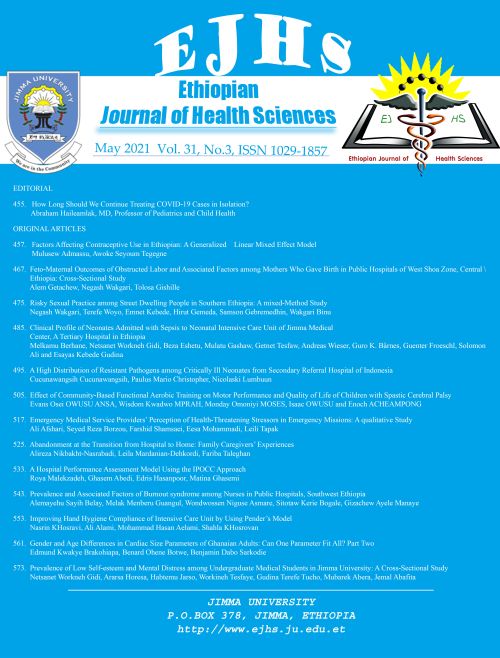Main Article Content
Antimicrobial Resistance Profile of Bacterial Isolates Identified from Surgical Site Infections at a Referral Hospital, Northwest Ethiopia
Abstract
BACKGROUND: Surgical wound infections (SWI) remain as a major source of postoperative illness that increases the time of hospital stay and health care related costs globally. On top of this, the emergence and spread of drug-resistant pathogens continue to challenge the proper management of surgical wound infections.
METHODS: A hospital based cross-sectional study was conducted at Felege Hiwot Referral Hospital (FHRH). A total of 165 study participants were included. Socio-demographic data were collected using a pre-tested structured questionnaire. Isolates were identified by conventional bacteriological technique and antimicrobial susceptibility test was performed using the Kirby-Bauer disc diffusion method.
RESULTS: Among 165 study participants, 98 (59.4%) were males. The overall prevalence of culture confirmed surgical wound infection was 115 (69.7%). A total of 125 bacteria isolates were identified among which, Staphylococcus aureus was predominant followed by Pseudomonas aeruginosa and Klebsiella species with
a proportion of 31 (24.8%), 26 (20.8%) and 17 (13.6%), respectively. Majority (80.8%) of the isolates were found multidrug resistant (MDR). Dirty wound and duration of hospital stay were found significantly associated with culture confirmed surgical wound infections.
CONCLUSIONS: S. aureus, P. aeruginosa and Klebsiella species were the most common isolates identified from surgical wound sites. Most of these pathogens were found MDR. Therefore, regular surveillance on the types of bacterial isolates and their drug resistance pattern should be considered.






